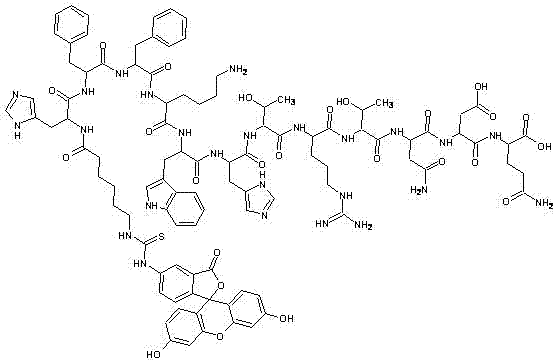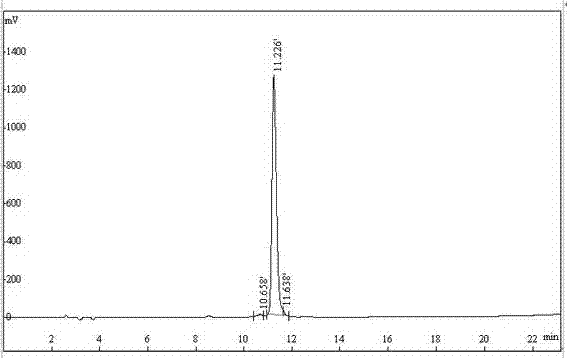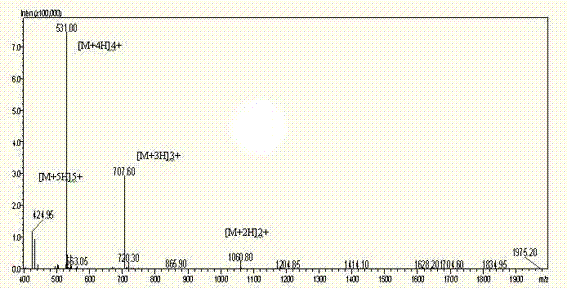Fluorescent probe for detecting microcystic toxin-LR in water
A microcystin and fluorescent probe technology, applied in the fields of molecular biology and microbiology, can solve the problems of long cycle time, cumbersome preparation of MC-LR monoclonal antibody, and inability to detect on-site
- Summary
- Abstract
- Description
- Claims
- Application Information
AI Technical Summary
Problems solved by technology
Method used
Image
Examples
Embodiment 1
[0094] Using MC-LR Standards to Establish Standard Detection Curves for Fluorescent Probes
[0095] 3. Screening of specific affinity ligands (screening includes non-specific elution and specific elution)
[0096] (1) The first round of non-specific elution
[0097] a. Use 0.1mol / L, pH 8.6 NaHCO with the prepared MC-LR 3 The solution was prepared as 100 μg / ml MC-LR solution. Add 1ml of this solution to a sterile polystyrene Petri dish (60×15mm) for coating, and carefully rotate repeatedly until the surface of the Petri dish is completely wet. After completion, put the culture dish into a plastic box covered with wet gauze and incubate at 4°C for more than 12 hours.
[0098] b. After incubation for 12 hours, pour off the coating solution in the petri dish, and vigorously pat on the filter paper that has been irradiated by ultraviolet light to remove the residual coating solution. After removing the residual liquid, add 2ml of blocking solution to the Petri dish, and block a...
PUM
 Login to View More
Login to View More Abstract
Description
Claims
Application Information
 Login to View More
Login to View More - R&D
- Intellectual Property
- Life Sciences
- Materials
- Tech Scout
- Unparalleled Data Quality
- Higher Quality Content
- 60% Fewer Hallucinations
Browse by: Latest US Patents, China's latest patents, Technical Efficacy Thesaurus, Application Domain, Technology Topic, Popular Technical Reports.
© 2025 PatSnap. All rights reserved.Legal|Privacy policy|Modern Slavery Act Transparency Statement|Sitemap|About US| Contact US: help@patsnap.com



